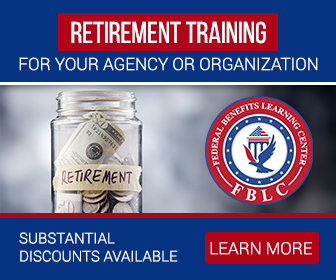Key Takeaways:
-
Federal employees should stay informed about the latest hiring trends, pay adjustments, and retirement changes in 2025, as these updates impact long-term career and financial planning.
-
Legislative proposals and policy shifts may alter retirement benefits, annuity calculations, and government contributions to health plans, making it essential to reassess financial strategies.
Federal Hiring Trends: What to Expect in 2025
With ongoing workforce shifts, federal hiring patterns continue to evolve. The federal government is adapting to economic changes, budget constraints, and shifting workforce priorities, which impact both new applicants and current employees considering lateral moves or promotions.
1. Potential Hiring Freezes and Workforce Reductions
Federal hiring is largely influenced by budgetary decisions, and 2025 is no exception. Agencies are experiencing workforce restructuring, and there have been proposals for hiring freezes in certain departments to reduce government spending. While not all agencies are affected, departments facing budget constraints may slow down or halt hiring for non-essential roles. If you’re planning a career move within the federal system, staying updated on agency-specific hiring trends is critical.
Additionally, some agencies are introducing temporary contracts and term-limited positions to navigate hiring freezes while still meeting workforce needs. If you’re considering a federal career, keeping an eye on temporary opportunities may provide a strategic entry point into permanent roles.
2. Competitive Pay Adjustments for Federal Workers
Each year, federal employee salaries are subject to cost-of-living adjustments (COLAs) and locality pay increases. The White House proposed an average pay increase for federal employees in 2025, but the final figure depends on congressional approval. The increase aims to address inflation and maintain competitive salaries, particularly in high-cost living areas. Locality pay adjustments vary, with some regions seeing higher raises to retain top talent.
If you are close to retirement, these pay adjustments could also impact your high-3 salary calculation—the average of your highest-earning three consecutive years—which determines your retirement annuity.
Beyond COLAs, there are also discussions about reforming the General Schedule (GS) pay system to offer more competitive wages and enhanced performance-based pay. These changes could impact promotions, step increases, and annual raises.
Retirement Changes Affecting Federal Employees
Federal retirement benefits remain a key concern for employees planning their financial future. Several policy changes and legislative proposals could impact FERS (Federal Employees Retirement System) and CSRS (Civil Service Retirement System) retirees.
3. Locality Pay May Be Excluded From High-3 Calculation
A proposal introduced in early 2025 suggests excluding locality pay from the high-3 salary calculation for retirement annuities. If enacted, this change could significantly reduce pension amounts for federal workers retiring in future years. Currently, locality pay is included in the calculation, meaning employees in high-cost areas benefit from higher annuities. Excluding it could lower expected retirement income, making early financial planning more important than ever.
Furthermore, some federal unions are advocating for an alternative pension formula that could partially offset this reduction, but no final decision has been reached yet. If you are within five years of retirement, monitoring these developments is crucial for financial planning.
4. Government Contributions to Health Benefits May Change
Health insurance remains a major factor in federal retirement planning. In 2025, there is a proposal to change how the government contributes to the Federal Employees Health Benefits (FEHB) program. Instead of the current percentage-based model, a flat-rate voucher system is being considered. If implemented, this shift could increase out-of-pocket healthcare costs for both active employees and retirees. Reviewing your health plan options annually is crucial to ensure coverage aligns with your budget.
Moreover, new discussions in Congress include raising the retirement eligibility age for full FEHB benefits and introducing higher premiums for future retirees. These adjustments could significantly impact how you budget for healthcare in retirement.
Thrift Savings Plan (TSP) Updates and Investment Considerations
Your TSP contributions play a vital role in building retirement security, and recent changes affect how federal employees can maximize their savings.
5. Changes to TSP Contribution Limits and Matching Funds
For 2025, the TSP elective deferral limit is $23,500, with an additional $7,500 catch-up contribution available for employees aged 50 and older. Those between 60 and 63 qualify for an even higher catch-up contribution of $11,250. Ensuring you maximize these contributions can significantly impact your retirement savings.
Additionally, a proposal to eliminate the G Fund subsidy has raised concerns among federal employees who rely on this low-risk investment option. While the G Fund remains stable, potential changes could affect its overall yield, influencing your long-term returns. Diversifying your TSP portfolio may help mitigate any negative impacts.
Another key update involves new withdrawal flexibility that allows retirees to schedule more frequent disbursements, giving them greater control over their retirement income.
Social Security and Federal Retirement Coordination
Federal retirees often rely on Social Security benefits to supplement their annuities. With major legislative changes in 2025, you may need to rethink your claiming strategy.
6. WEP Repeal and Its Impact on Federal Retirees
As of January 2025, the Windfall Elimination Provision (WEP) has been repealed. Previously, WEP reduced Social Security benefits for federal employees who also had a government pension. With its repeal, CSRS retirees now receive full Social Security benefits based on their work history, potentially increasing monthly payments.
However, the Government Pension Offset (GPO) remains in place, which still reduces spousal and survivor benefits for those receiving a government pension. Understanding how these rules affect you is crucial when planning for retirement income stability.
A new bill is under discussion to modify GPO reductions by introducing a phased reduction approach rather than a direct cut. While the bill is not yet law, it remains a critical factor for spousal and survivor benefits in the federal community.
What These Updates Mean for Your Federal Career and Retirement
With hiring trends shifting, pay structures evolving, and retirement benefits facing possible changes, staying informed helps you make better financial and career decisions. If you are planning to retire in the next few years, reconsidering your financial strategies, including TSP allocations and annuity calculations, is essential.
For those still years away from retirement, taking advantage of pay adjustments, maximizing contributions, and keeping an eye on legislative changes can ensure a stronger financial future.
Get Professional Guidance on Your Federal Benefits
Understanding the complexities of federal employment, pay adjustments, and retirement benefits can be overwhelming. To make informed decisions, consider speaking with a licensed agent listed on this website who specializes in federal retirement planning. They can help you navigate benefit changes, optimize your retirement strategy, and ensure you’re on track for financial security.









